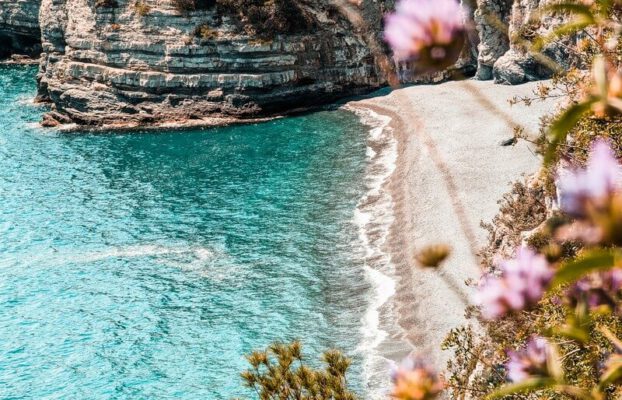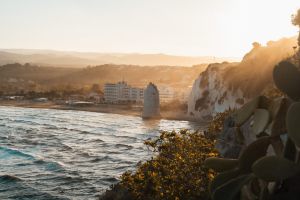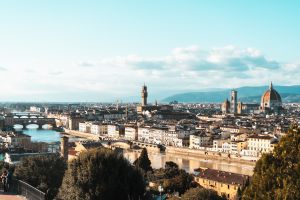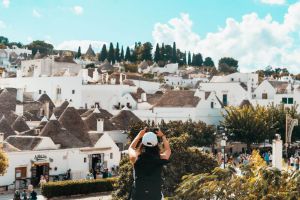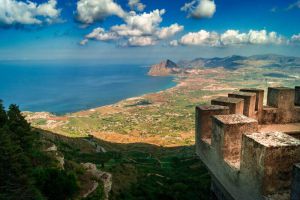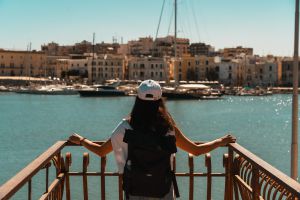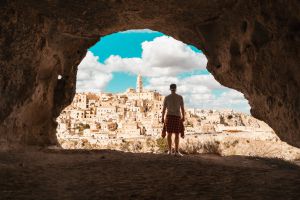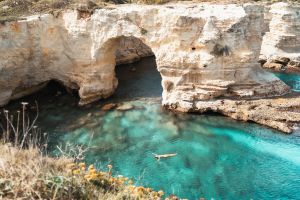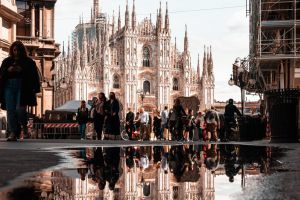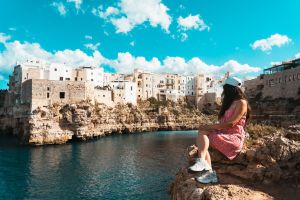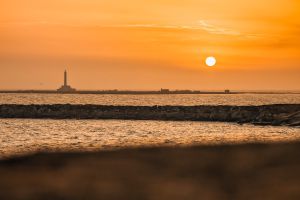This ingenious road trip takes you along the Ligurian coast west of Genoa to the border with France. In this article, I recommend an Italy route through Liguria that takes you to fantastic stretches of coastline, past giant olive groves and into cozy Italian villages with historical charm and great beaches. I’ll show you the best sights along the route, which you can cover in a relaxed 5-6 days. I’ll also give you lots of tips on how to avoid typical cost traps on your Italy route.
Liguria is one of the most beautiful stretches of coastline in the Mediterranean. It stretches west from Genoa to the French border and east from Genoa to La Spezzia. The eastern part of this region is the most popular. And that’s why you should take a closer look at the west – the Riviera di Ponente.
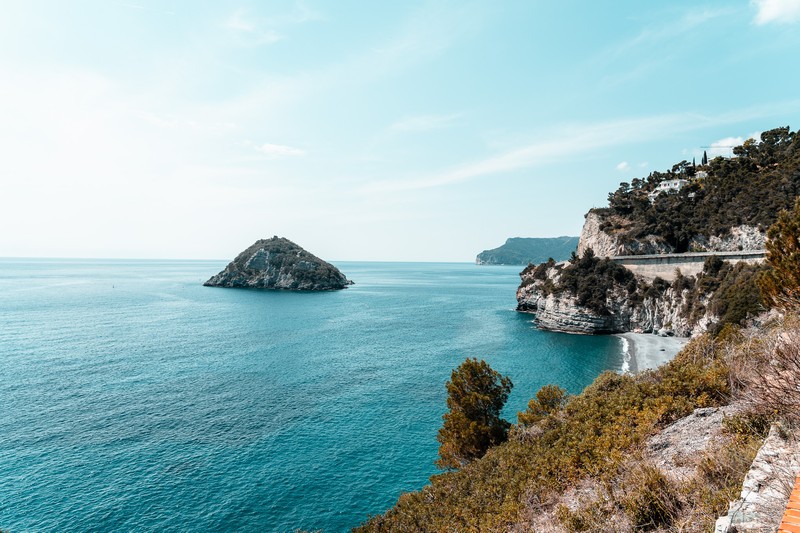
The Riviera di Ponente consists of the Palm Riviera (Riviera delle Palme) from Varazze to Laigueglia and the Flower Riviera (Riviera dei Fiori) from Imperia via Sanremo to the French border.
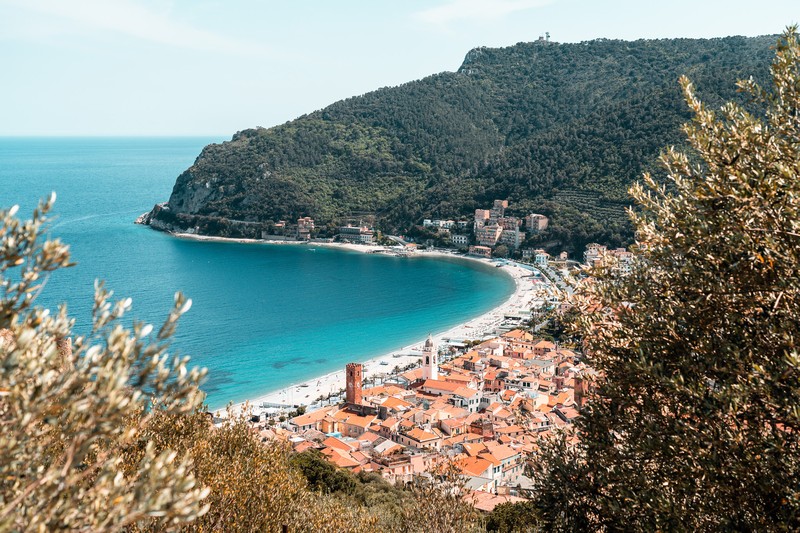
The good thing about the western part of Liguria is that there aren’t as many tourists here as in the east, where the famous Cinque Terre is located. There are just too many people who want to go there.
You should plan about 6 days for this road trip. This will give you enough time to visit all the highlights mentioned in the article. I will also give you recommendations for overnight stays at the individual stopovers on the route.
You can also find the individual stopovers mentioned in the article here on the map:
To drive the route you need a hire car. I myself found a good offer for my road trip on check24. It’s best to book a smaller car with all-round insurance (glass, floor, roof). Also take a look at the general Italy road trip tips at the end of the article to not make the same mistakes as I did and to avoid unnecessary additional costs.
1. Varazze – Noli
Varazze
Varazze is the starting point of this Italy route. The first thing you will notice in Varazze is the long, beautiful pebble beach with its colourful rows of houses, which invites you to take a stroll.
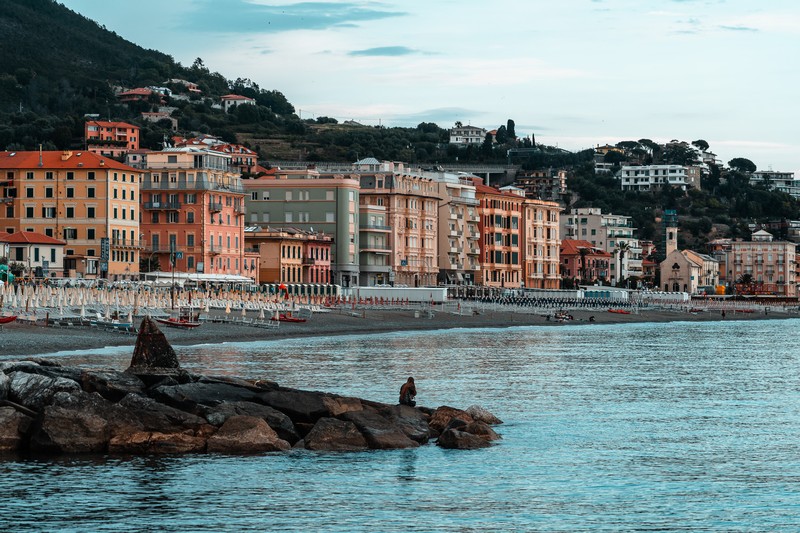
One of the beautiful hotels in the city is the Hotel Ariston. It is a good starting point for exploring the city and from the upper floors you also have a great view of the sea.
I recommend the Restaurant Garbassu in retro/vintage style for a meal. It’s easy to miss in a small alleyway in the courtyard and, in addition to the delicious food, the candlelit atmosphere here in the evening is magical – perfect for a candlelit dinner.
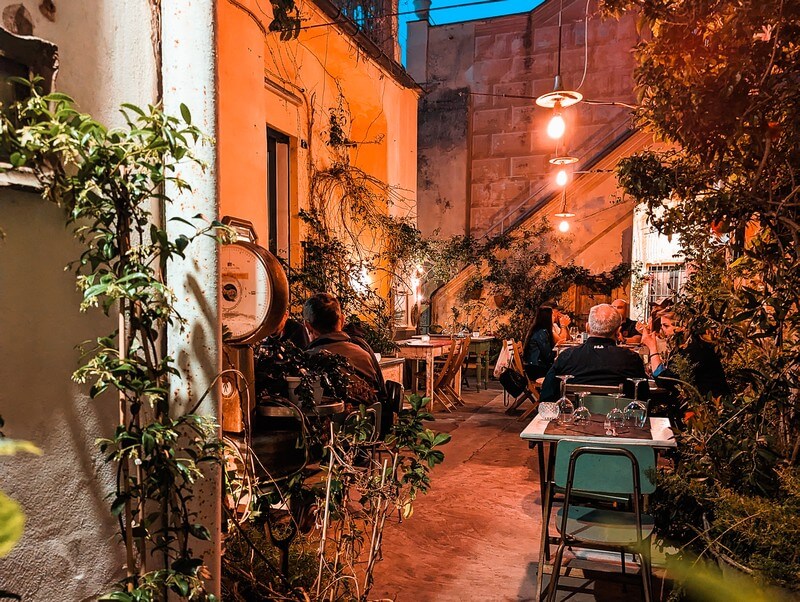
Savona
A short stopover in Savona is worthwhile. The th largest city in Liguria is primarily known for its harbour. However, the old town and around the marina, where there are also many bars and restaurants, are the best places to be. If you have enough time, you can also visit the medieval fortress Fortezza del Priamar.
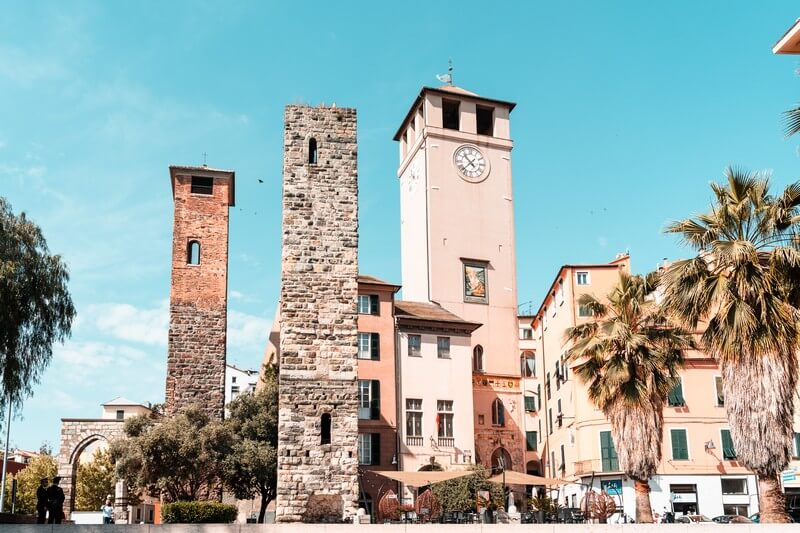
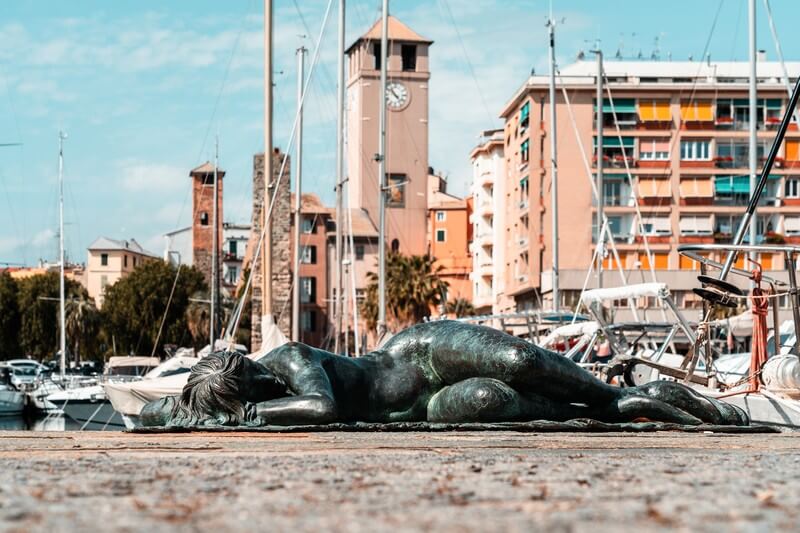
You can also find some great activities in Savona. Discover the culinary specialities of the region or explore maritime life:
- Pelagos Sanctuary Wildlife Cruise with Guide
- Cooking course in the home of a local
- Market and private cookery course in a local’s home
Spiaggia Punta Pròdani
Right at the start of the route, one of the most beautiful natural beaches awaits you – the somewhat hidden bay Spiaggia Punta Pròdani near Bregetti. There is no car park here, but most visitors stop on the hard shoulder at the Parco Panoramico Transylvania (about 5-8 cars can fit there). From there, you can walk down the steps to the bay.
The water here is simply wonderfully refreshing on a hot summer’s day and the turquoise blue of the sea combines perfectly with the white of the fine sandy beach.
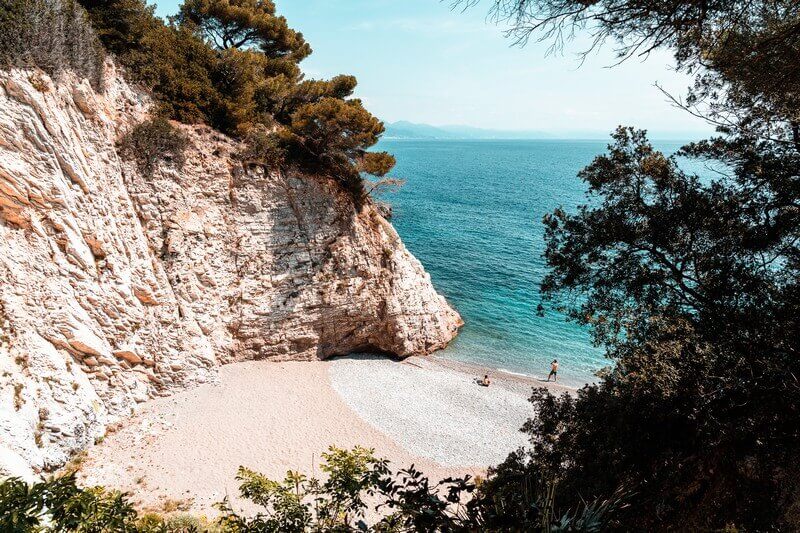
Noli
Noli is famous above all for its medieval town centre and the Castle of Monte Ursino that towers over the town. The ancient structure within the city walls of Noli is still almost intact and you will almost feel like you are in the Middle Ages as you stroll through the alleyways.
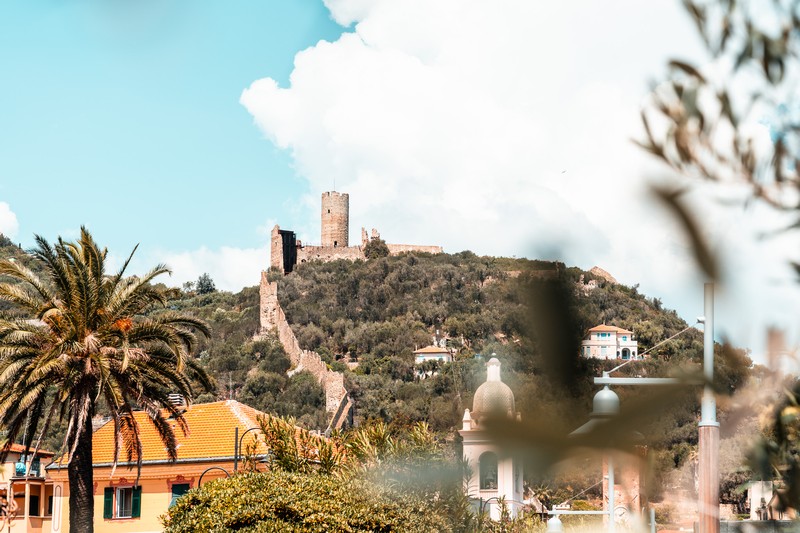
You can only visit the fortress from Friday to Sunday. Access to the castle is closed during the week. But it’s worth a visit even then, as you have the best view of Noli’s beach and the old town from the top.
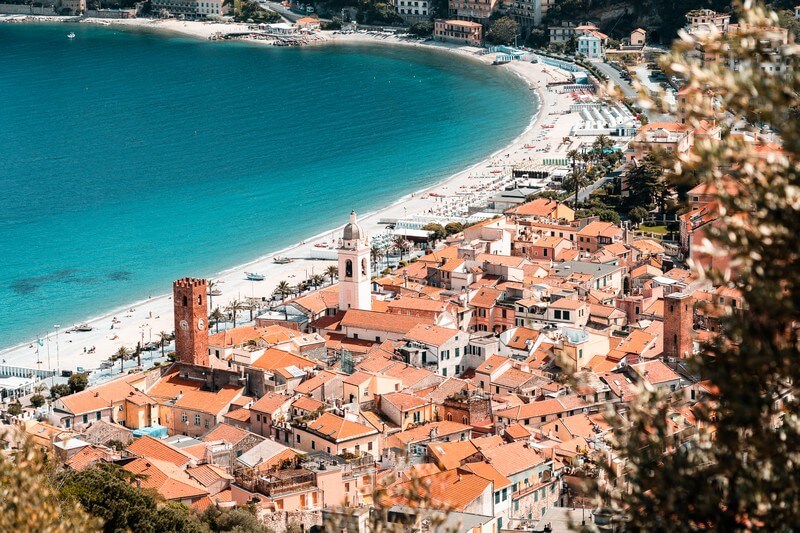
A great hiking trail leads along the coast past the cemetery to the entrance of the castle. On the other side of the road and through smaller alleyways, you return to the old town centre.
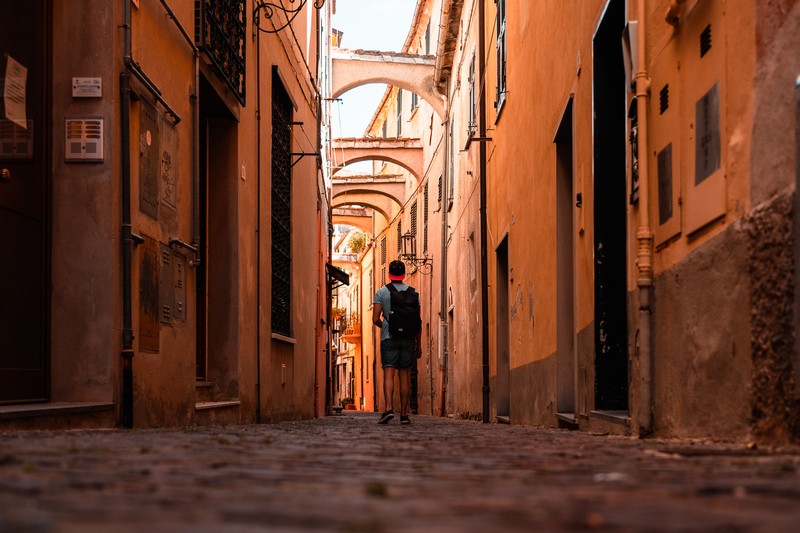
It is not without reason that Noli is one of the “I borghi più belli d’Italia” (the most beautiful places in Italy), voted onto this list for its outstanding historical and artistic interest.
2. Noli – Varigotti – Finale Ligure
Varigotti
Varigotti is just a few minutes away from Noli – for me one of the most beautiful coastal towns along this Liguria route. Varigotti looks different to the other towns along the route. This is mainly due to the somewhat sleepy atmosphere. But the picturesque architecture of the houses with their rounded shapes and bright pastel colours, which stand out against the navy blue sea in the background, also make Varigotti a real feast for the eyes.
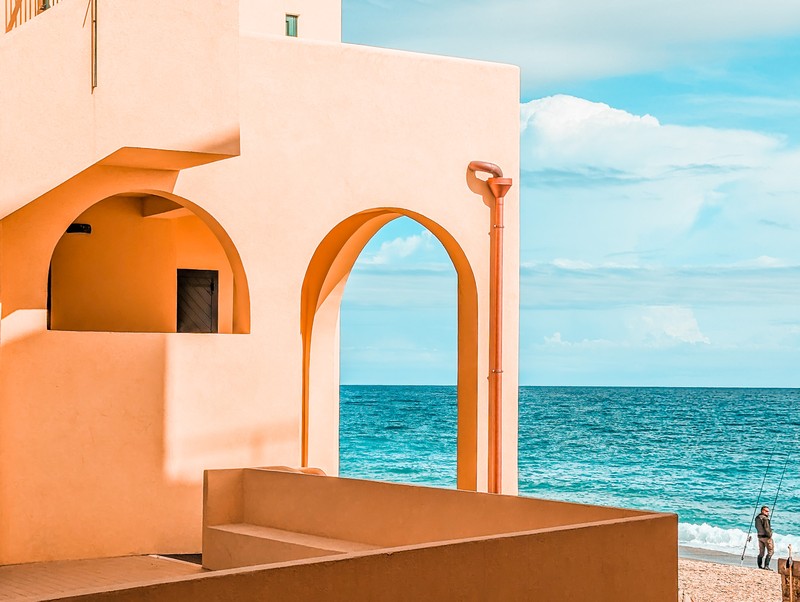
The architecture even reminded me a little of Mos Espa on Tatooine. But that will only mean something to Star Wars fans ;)
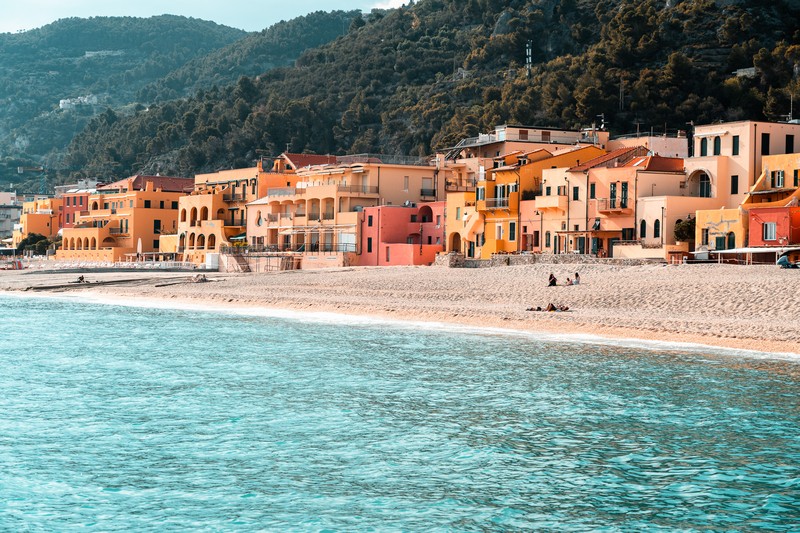
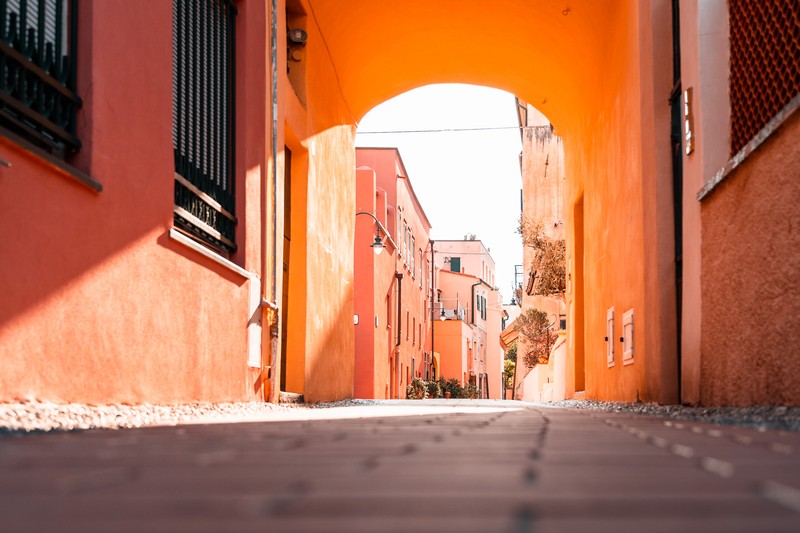
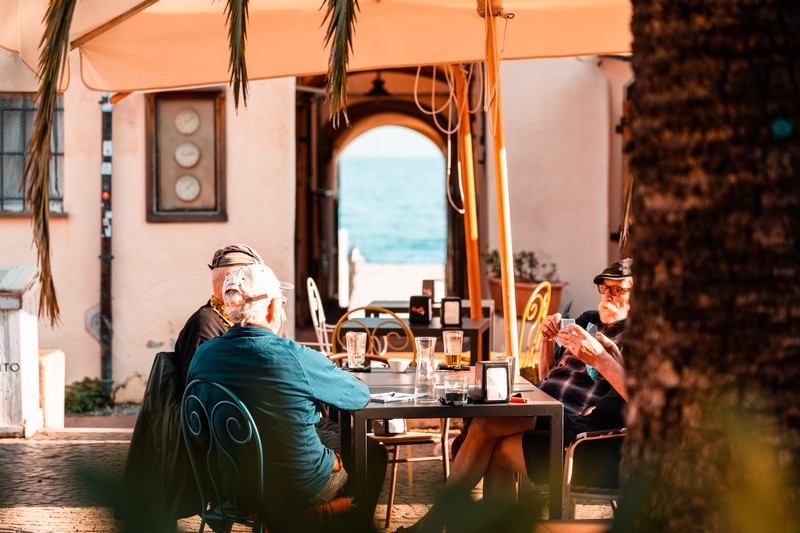
Varigotti is influenced by the Saracens who occupied the area in the Middle Ages. You can still recognise this today from various street names. But the Baia dei Saraceni, one of the most beautiful beaches in Italy, is also reminiscent of ancient times. You can get there from Varigotti via a small path that is not signposted on Google Maps and leads along the road tunnel. There are also car parks directly on the beach.
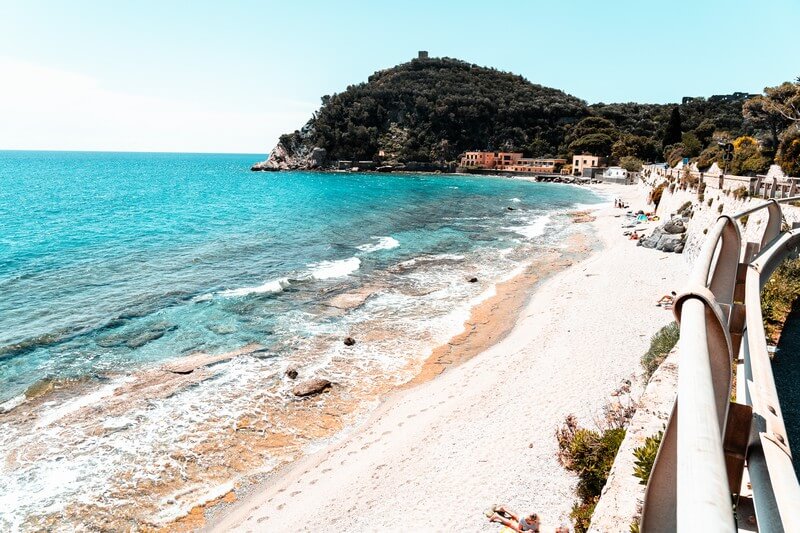
But I found the main beach, Spiaggia libera di Varigotti, which is partly sand and partly pebbles, to be more beautiful for swimming.
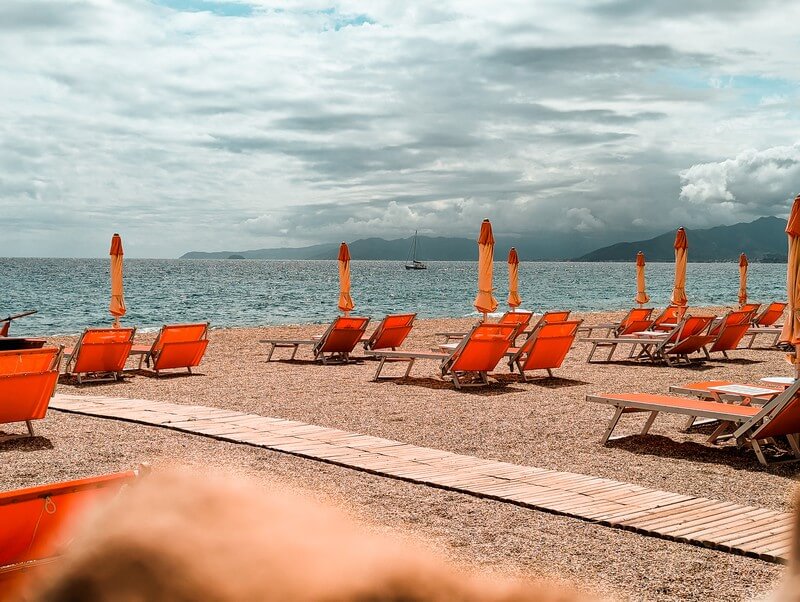
I liked Varigotti so much that I even stopped there again on the way back and spent the night. There is not much accommodation in the town, but if you are travelling outside the high season, you should still be able to find enough free rooms. I would recommend the Hotel Albatros, where I stayed myself. It is located right on the beach and you can enjoy your breakfast from the terrace in the morning to the sound of the sea. It’s best to look for one of the rooms with a sea view.
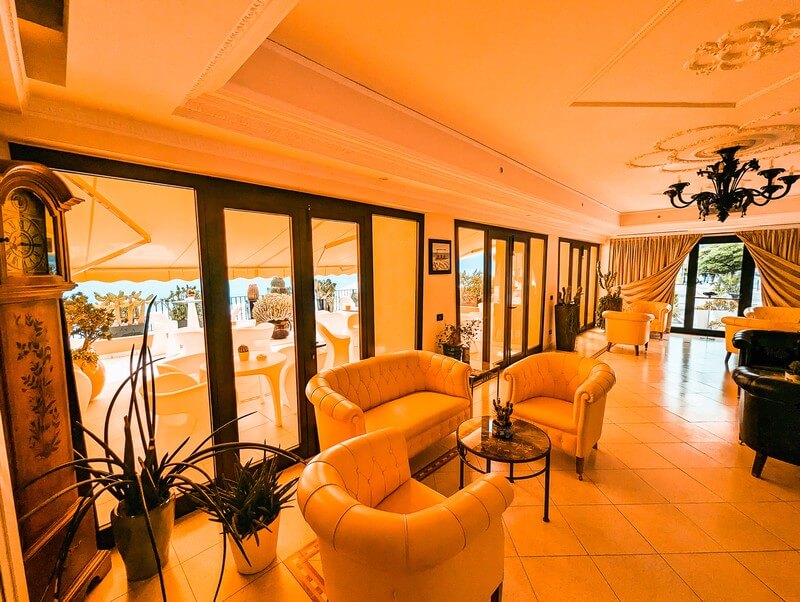
Finale Ligure
Finale Ligure is another one of those typical seaside resorts in Liguria with a wonderfully long sandy beach. The streets along the promenade are always bustling with activity and it’s worth taking a stroll along the coast.
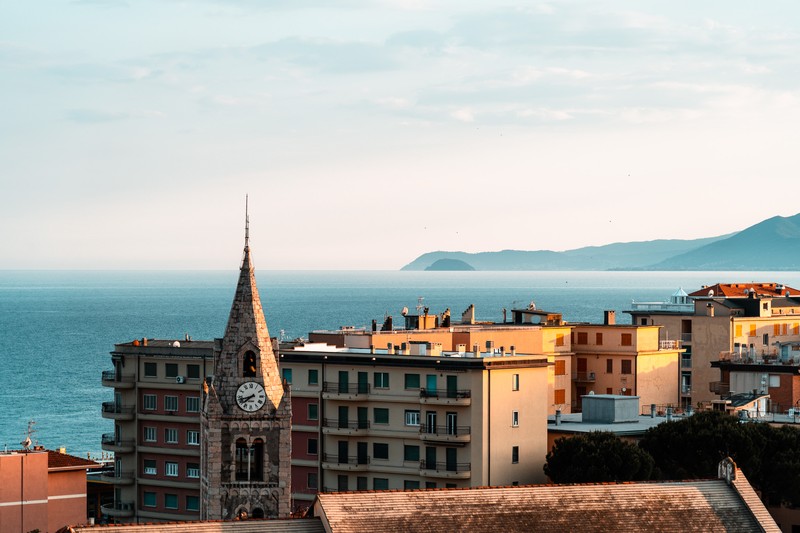
There are plenty of hotels in the town. One of the more affordable ones is the Hotel Europa. The special thing here is the marvellous view from the roof terrace over the rooftops of the city and the sea. The very friendly and helpful hotel owner also makes you feel right at home here.
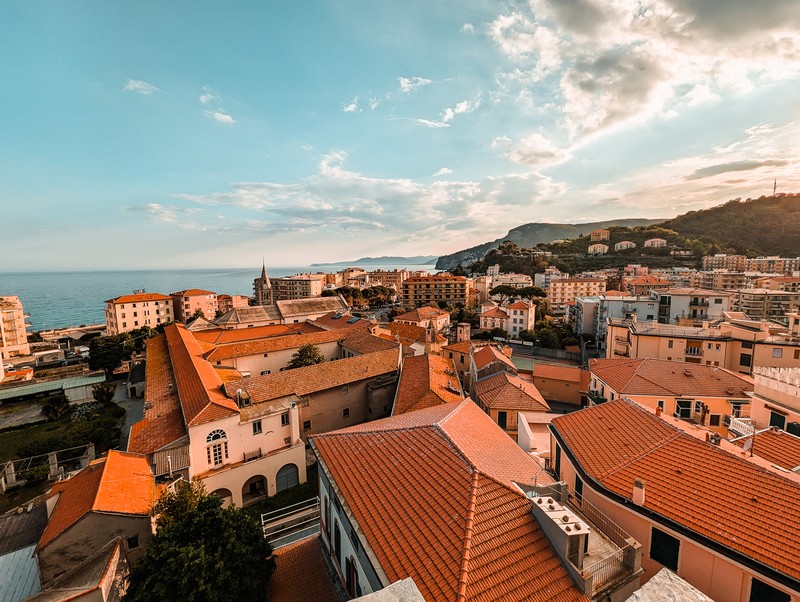
3. Finale Ligure – Imperia
Finalborgo
Finalborgo is actually a district of Finale Ligure, but was once independent in the Middle Ages. It is surrounded by a well-preserved medieval ring wall. You can only reach the centre through one of the 4 town gates. The fortress Forte San Giovanni is enthroned on a rock above the town.
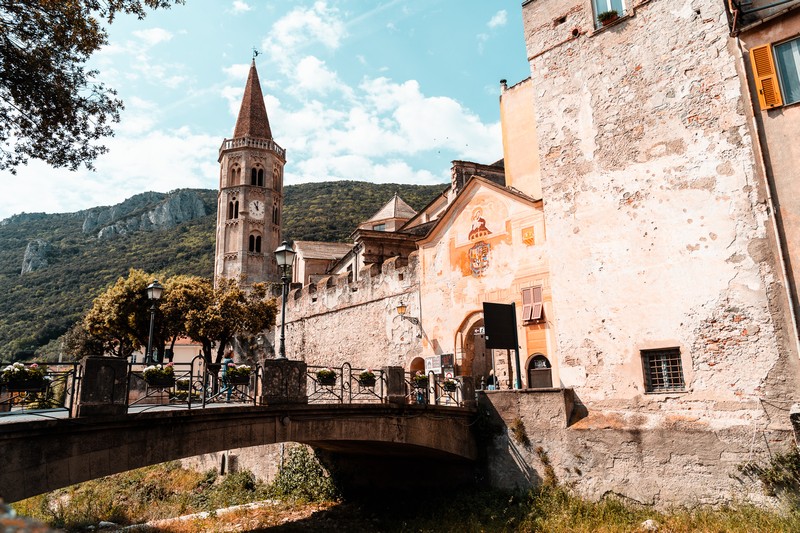
It’s worth a visit. Stroll through the labyrinthine alleyways and cobbled squares and relax with delicious pasta or pizza in one of the restaurants. You should also pay a visit to the Collegiata di San Biagio church.
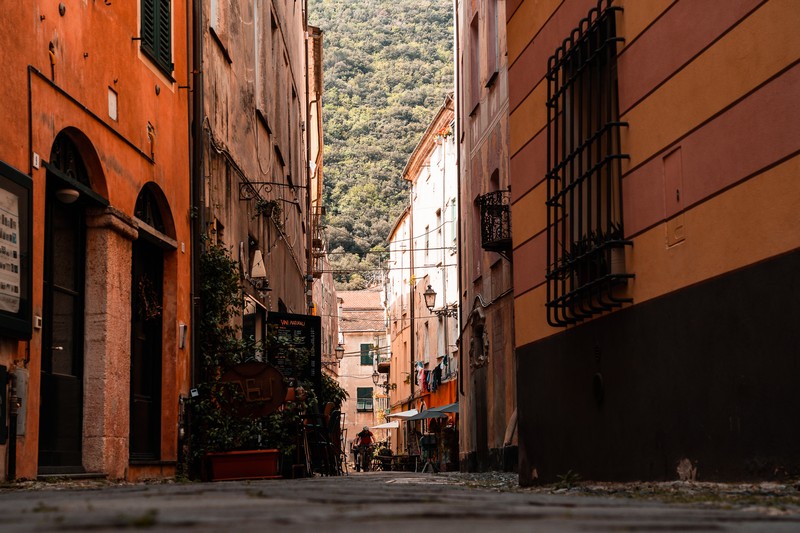
Laigueglia
In Laigueglia, you will certainly notice the powerful towers of the church of San Matteo. You can easily recognise them from the 3 km long sandy beach. This is also worth exploring.
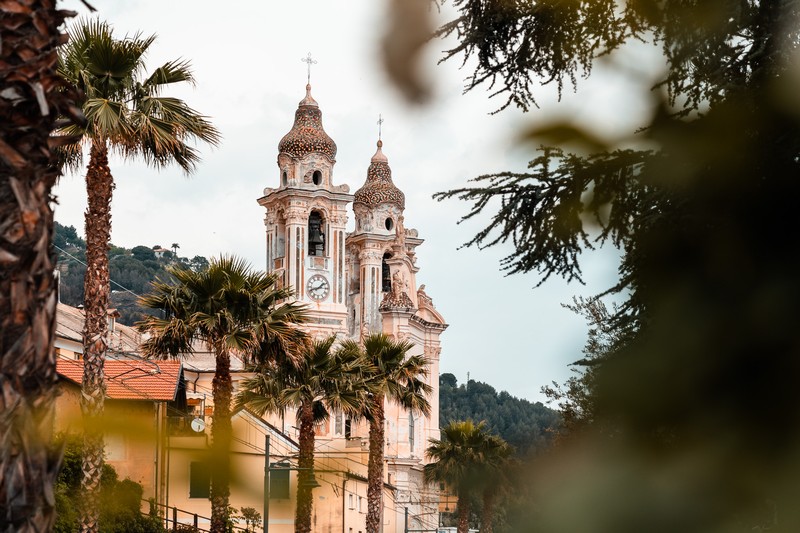
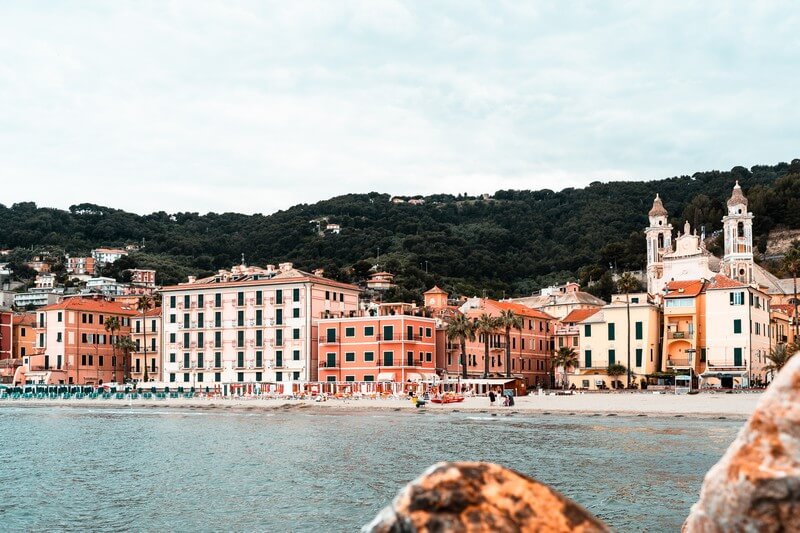
Cervo
You should spend at least a few hours in Cervo. The staircase district in Cervo’s old town centre takes you from the beach all the way up the hill to the Church of San Giovanni Battista. The not entirely easy climb through the labyrinth of alleyways and stairs is an experience in itself.
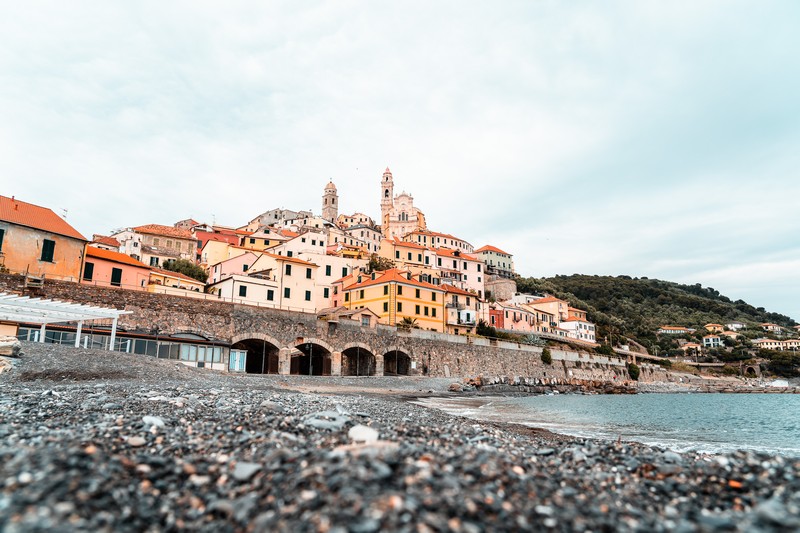
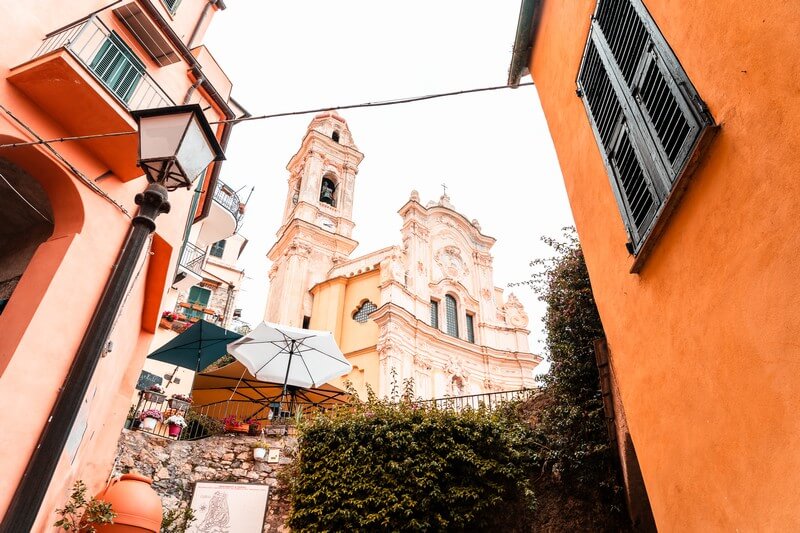
Imperia
Imperia actually consists of 2 town centres: the western old town of Port-Maurice with its many winding alleyways and a marina, and the more modern eastern town of Oneglia with its many shops. In between lies the River Impero. The two parts were once independent towns, which is why there is still a small rivalry between them today.
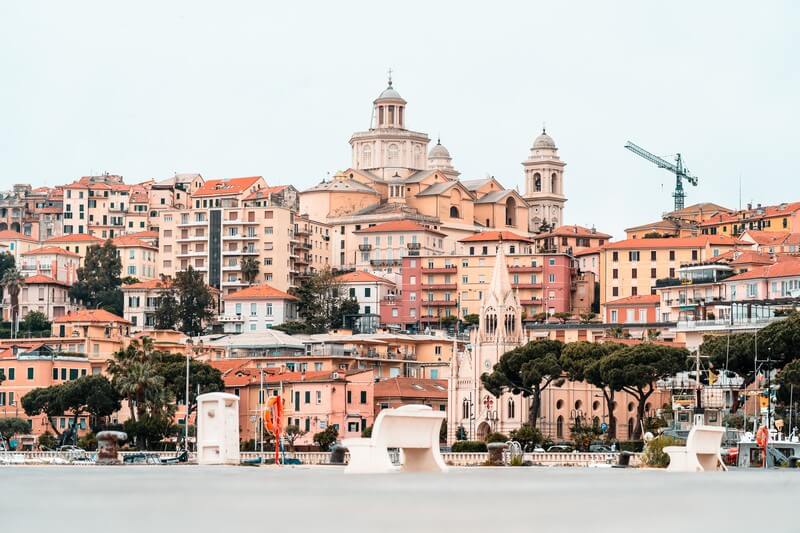
Imperia is also a centre for the cultivation of exotic plants. It is not without reason that the so-called floral riveira begins in Imperia.
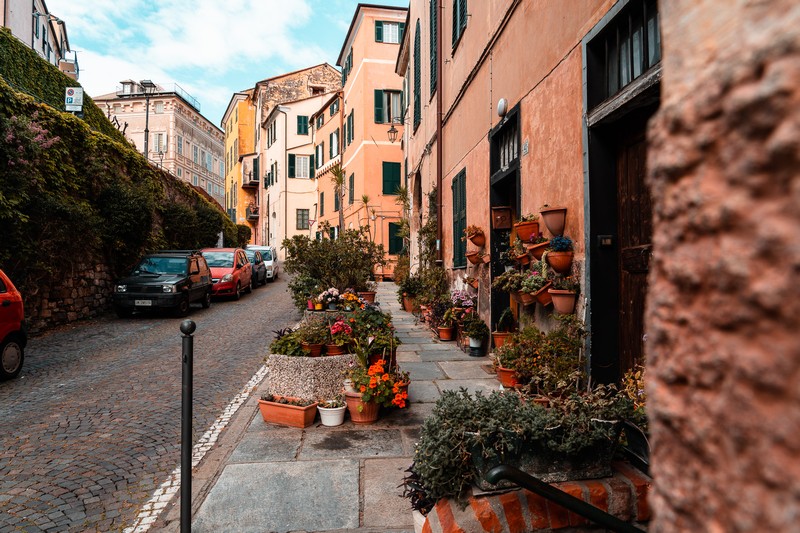
The marina and the old town of Port-Maurice on the Parasio hill as well as the extravagant Art Nouveau villa further east, where the famous Swiss clown Grock once lived, are worth a visit in Imperia.
The Museo dell’Olivo is also worth a visit. Here you can learn all about the olives for which this region is famous. In fact, the olive oil produced from Imperia’s olives is of such high quality that it is used by many Michelin-starred chefs. So if you want to take home a souvenir from this region, it should be olive oil from Imperia.
Imperia is also a good place to stay overnight, as there are some top hotels here. One of my recommendations is the Hotel Ariston. It is located in the centre of the old town and from here you can reach all the spots in just a few minutes on foot.
4. Imperia – Sanremo
Laghetti Lecchiore – Imperia’s hinterland
It’s definitely worth exploring the hinterland of Imperia. Huge olive tree forests characterise the landscape here.

At Lecchiore there is a great hiking trail with small pools and waterfalls where you can also swim. The best place to park your car is at the Chiesa parrocchiale di Sant’Agostino. From there, a footpath leads along the river to the small pools. There are also a few olive oil shops in the village that sell the oil produced in this region.
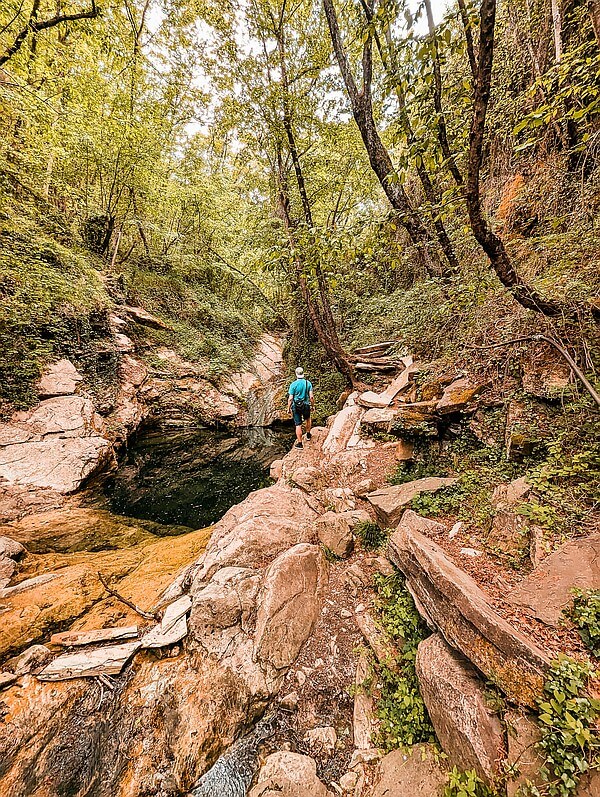
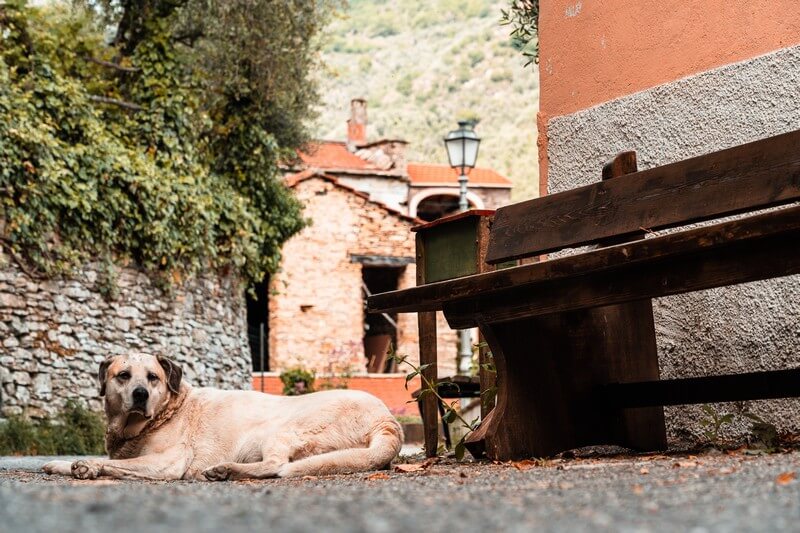
Sanremo
Sanremo is one of the most famous towns along the Ligurian Riviera of Flowers.
One of the most famous sights here is the Casino di Sanremo, which has long since left the splendour of days gone by behind. Personally, I only found it beautiful from the outside. Inside, you can still feel the atmosphere of the old days, but all the brightly flashing slot machines really spoil the historical flair. Admission to the casino is free, by the way.
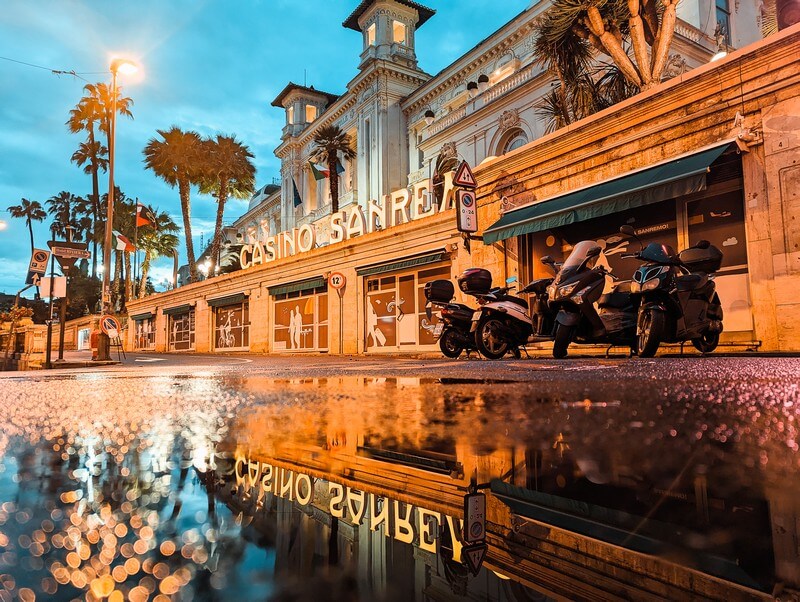
Not far from the casino you will find the historic Cinema Teatro Ariston. It was built in the 1960s and still retains some of the splendour of earlier days.
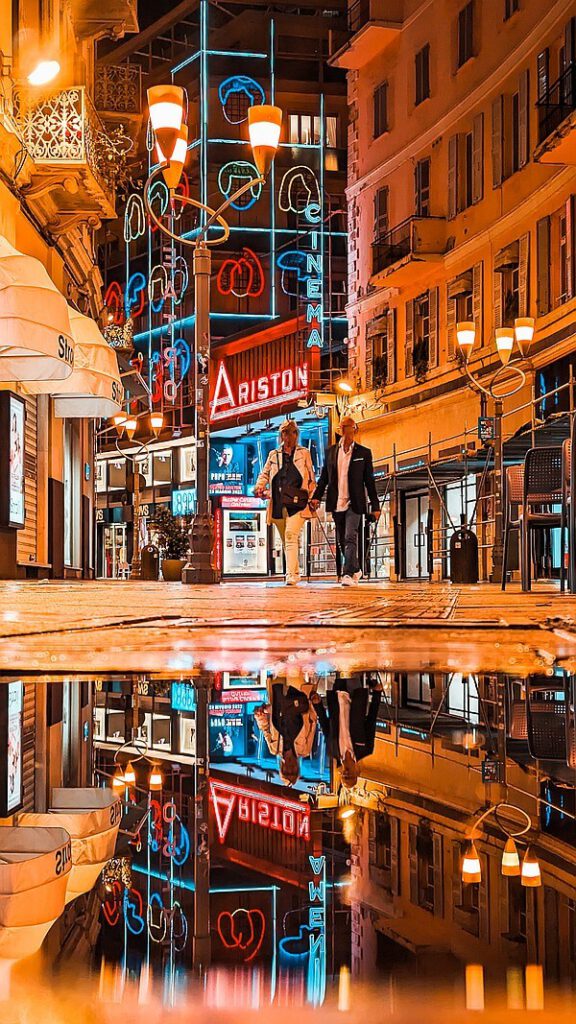
You will find many restaurants and bars around the Piazza Bresca.

Super beautiful in Sanremo are the Gardens at Villa Ormond and the Giardini Nobel. Neither of these cost admission. However, there is a flower museum for which you can buy an entrance ticket here in advance. Right next door is the Villa of Alfred Nobel, the inventor of the Nobel Prize. For €6 admission, you get access to the inside of the villa
.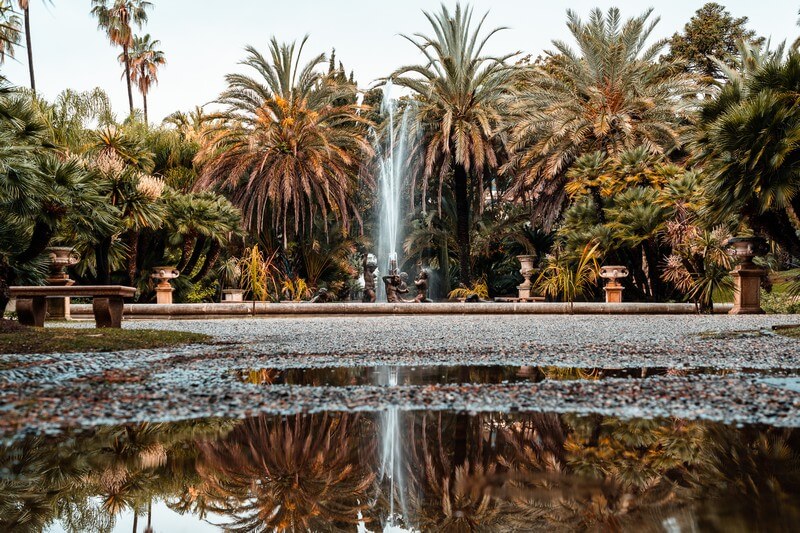
You have the best view from the La Pigna di Sanremo, which means “the pine cone of Sanremo”. The name comes from the geographical location of this slope, on which the houses are lined up in such a way that they look like the scales of a pine cone.
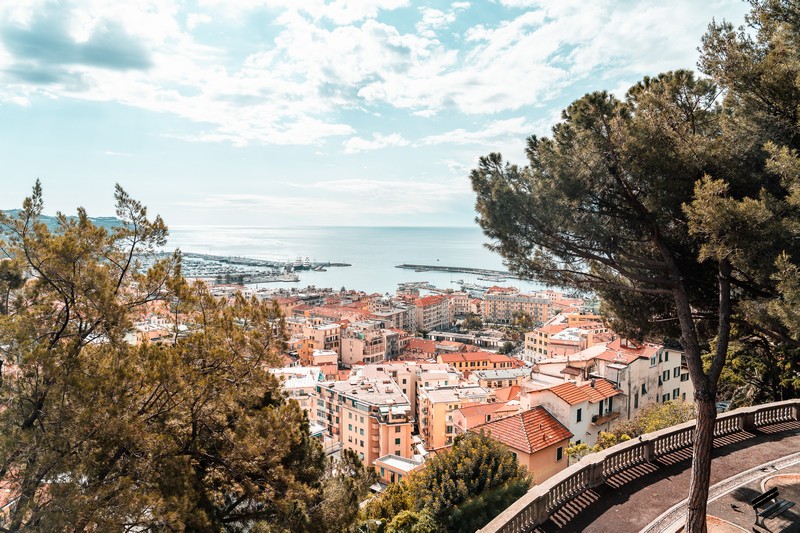
Sanremo is also great for activities. From water sports to cycling and speedboat tours, there is plenty of variety on offer:
5. Sanremo – Ventimiglia
Ventimiglia
Ventimiglia is a small but very lively town on the border with France. It is known for its street market, which takes place here every Friday. When you visit, make sure that you don’t park in certain streets, especially around the Giardini Pubblici.
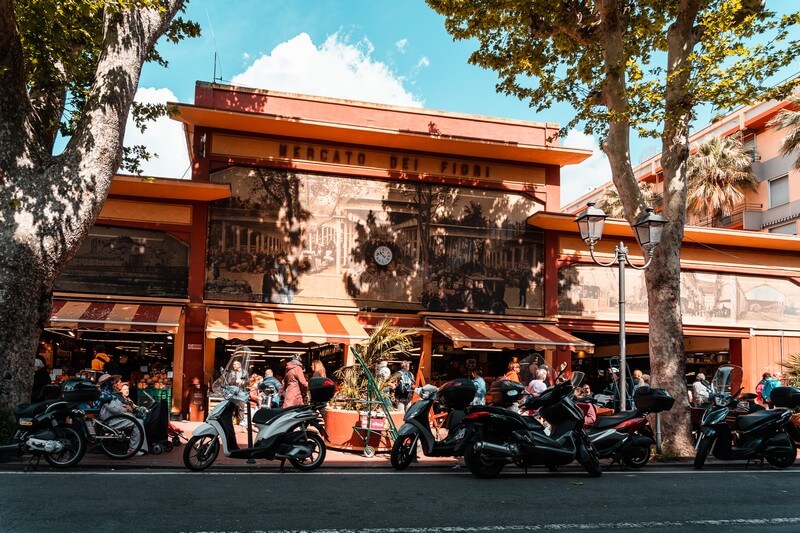
The Mercato Dei Fiori is open almost every day. There are many local products here.
6. Ventimiglia
Hanbury Botanical Gardens
From Ventimiglia, you should definitely visit the Hanbury Botanical Gardens. Admission costs €10 and you can walk a circular route here, which takes around 1.5 hours. The special thing about this botanical garden is its hillside location. From the very top, you have a wonderful view over the grounds to the sea.
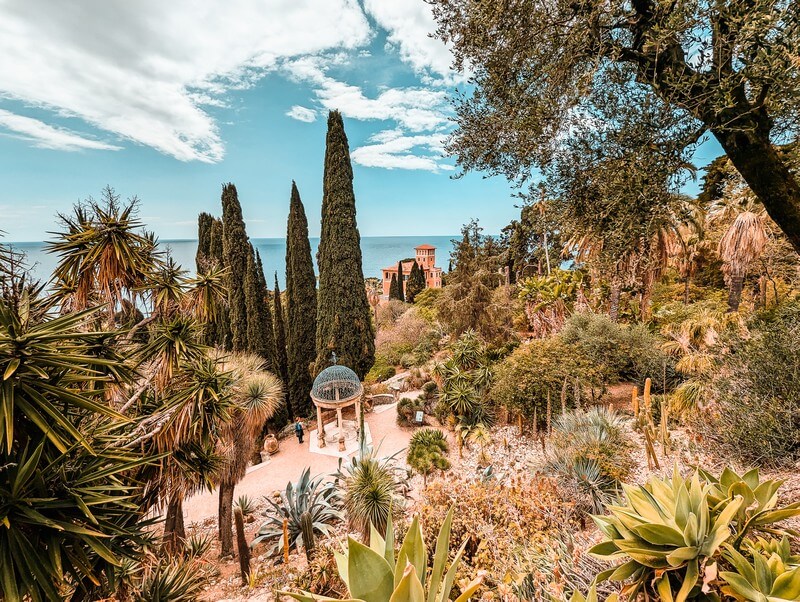
There are different areas in the garden, such as a Japanese garden, a dragon fountain, a garden of scents, the Australian forest and many more. When you reach the bottom, a small café awaits you where you can enjoy your espresso to the sound of the waves. Another special feature is that the garden still contains a very well-preserved section of the Roman road Via Julia Augusta that ran through here.

The origins of the garden date back to 1867, when Thomas Hanbury, who gave it its name, bought the farm that stood here before it was converted into a botanical garden. Together with his brother, Hanbury skilfully exploited the many different microclimates that exist here due to the varied slopes.
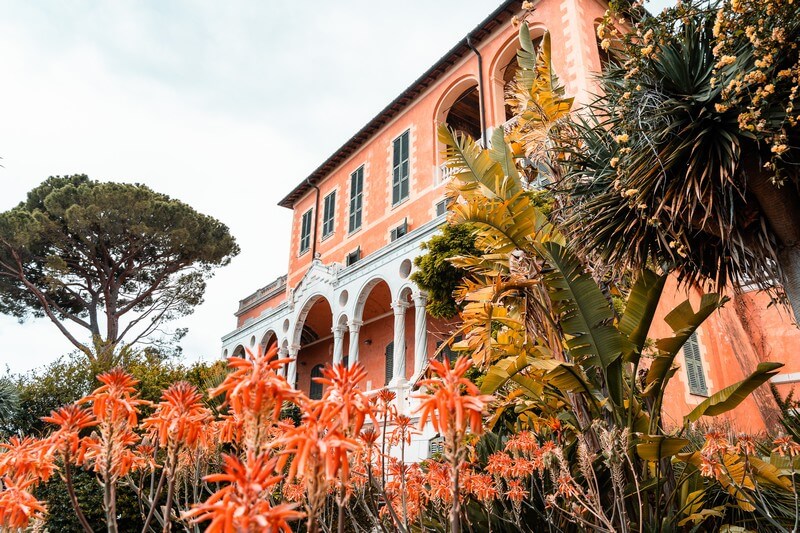
Return
Ventimiglia is also the end of this road trip. From here, you can drive back the way you came to drop off your hire car. It takes around 2 hours on the motorway to Genoa and around 3.5 hours to Milan.
Questions and answers about Liguria
In my opinion, the best time to visit Liguria is April and May. The weather is great then, but there aren’t so many tourists around yet. In general, however, you can say that it’s worth visiting Liguria from April to October in terms of the weather.
By the way, it’s always most crowded throughout Italy in August. This is when most Italians go on holiday, usually around 15 August (Ferragosto) – one of the most important Italian public holidays.
Many tourists find the Cinque Terre with its centuries-old coastal villages and colourful houses the most beautiful. The coastal town of Portofino is also very popular. Many celebrities visit here. However, these regions are also often extremely overcrowded, with kilometre-long traffic jams on the narrow streets and you will stumble over dog leads from thousands of other tourists.
Personally, I found it most beautiful west of Genoa. The coastal village of Varigotti, but also the historic town of Noli and the Hanbury Botanical Gardens near Ventimiglia were my absolute highlights.
Liguria is known for its fantastic coastal towns with colourful houses. The region in Imperia is also known worldwide for its olive groves and the olive oil that is produced from them. The western part of Liguria is also known as the Riviera of Flowers because of the mild climate and the large areas where flowers are grown.
The capital of Liguria is Genoa with just under 800. 000 inhabitants.
Short answer: Yes. But Sanremo no longer has the glamour of its old days. Personally, I found other places along the Riviera of Flowers more beautiful, such as Varigotti, Noli or Ventimiglia.
The Riviera of Flowers begins at the French border near Ventimiglia and leads to Imperia.
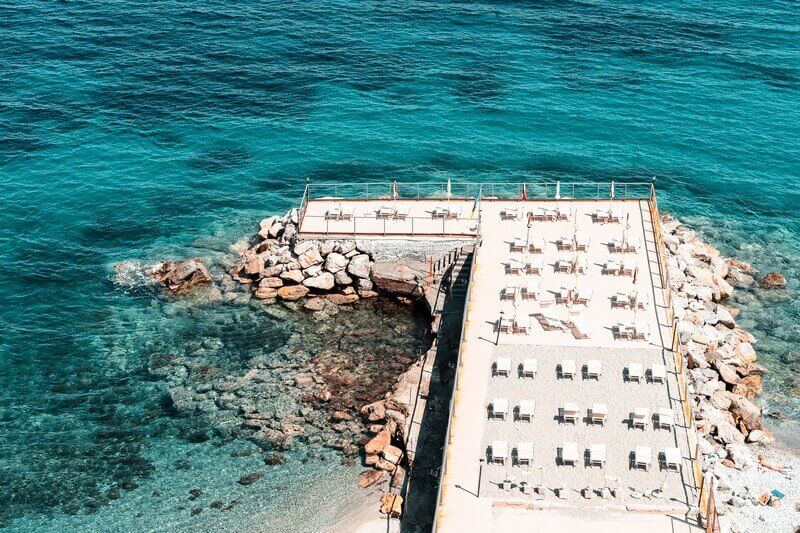
Italy road trip tips
I often hear the phrase “Really? You dared to do that?” when I mention that I’ve been driving in Italy. And there are indeed a few cost traps in Italy, some of which even the locals fall into again and again. Since I don’t want you to fall into some of them like I did, you should read the following tips carefully before your road trip to Italy.
Tolls in Italy
Italy has one of the oldest toll systems in Europe. Accordingly, there are many toll roads on which you have to pay tolls. The cost is around 70 cents per kilometre, which you only have to pay when you leave the motorway. However, there are also more expensive toll sections.
You don’t have to use the toll roads. There is usually an alternative route to your destination. But this usually takes longer. One example is the Ligurian coast. Along the entire coast, there is always a toll road a little further inland that leads through many tunnels and over bridges. But there is also always a more winding path directly along the coast that you don’t have to pay for.
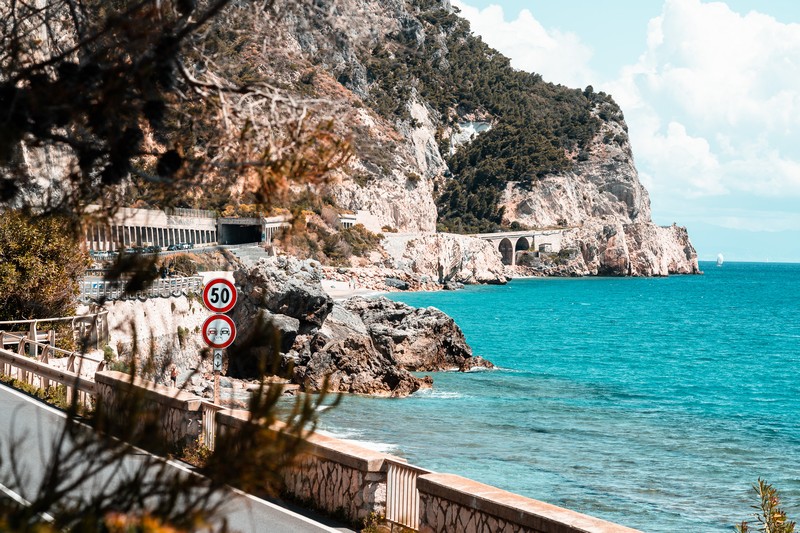
You can set “Avoid toll roads” in the route options of Google Maps to avoid accidentally driving onto a toll road.
Once you have entered a toll road, there is often no turning back. So look out for the signs with the words “Alt Stazione”. When you enter a station, you will be given a ticket at the machine that includes the time and place of entry. When you approach the station, the ticket is always already hanging outside. You simply have to pull it out, wait until the barrier opens and drive off.
Only when you leave the toll road again do you have to show the ticket or insert it into a machine. You can pay with a credit or debit card or cash. Pay attention to the white, blue and yellow signs or lane markings. You should avoid yellow, as this only counts for automatic number plate recognition, for which you need a Telepass. White is usually for cash payments and blue for credit cards.
Parking in Italy
Parking in Italy is a science in itself.
Parking spaces in Italy are usually marked with coloured lines.
- White – You can usually park here free of charge.
- Blue – You can park here, but you have to buy a ticket from a ticket machine or put the parking disc in your car. Pay attention to the signs.
- Yellow – Only residents are allowed to park here.
Parking can be difficult, especially in cities. There are days – often Saturdays – when there are absolutely no parking spaces available. In this case, it’s better to look for a car park a little further out.
Traffic-calmed zones
This point can become a damn high cost factor on your trip to Italy. Believe me, I speak from my own experience and hope that you avoid the same mistakes I did.
In many towns, both large and small, there are so-called Zona a Traffico Limitado (ZTL), where only registered cars are allowed to drive. This is often monitored by cameras. One such zone is located in the old town centre of Imperia in San Maurizio, for example. As soon as you enter this zone, you will be registered and receive a hefty fine of between €83 and €332 a few months later. Usually there is also a delivery fee from the car hire company (around €40 – €50).
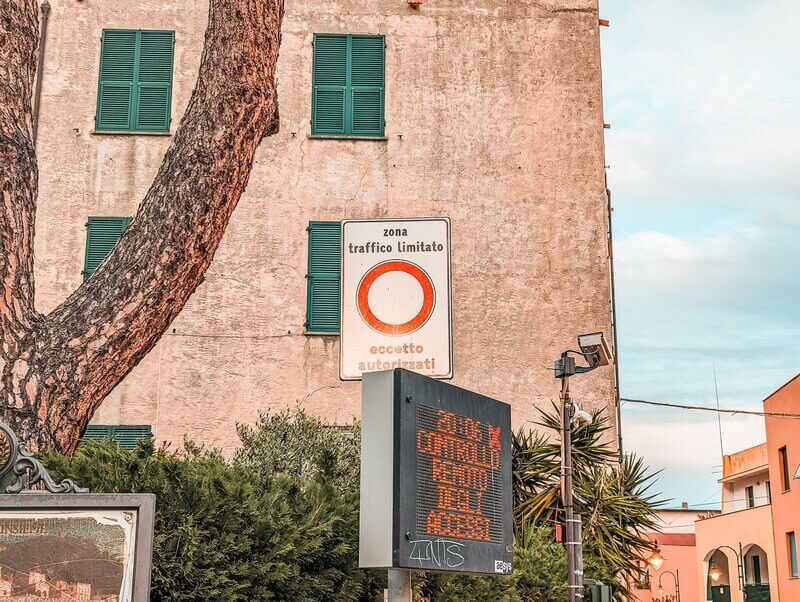
And it gets worse: driving in the same zone more than once can also result in several separate penalties. That’s why you should always pay attention to the relevant signs and avoid these zones.
GPS software and Google Maps usually do not recognise these traffic-calmed zones, but only show you the shortest route, which could also lead directly through such a zone.
An exception is if your hotel is located in such a zone. Then you can ask at the hotel if they can register your licence plate, after which you won’t have to pay a fine when driving in the zone. It is always best to find out in advance whether there is a ZTL and where exactly it is located. When driving, you should then always pay particular attention to the red circle signs, which are admittedly easy to overlook.
A road trip along the Ligurian coast with the Italy route described here can be really wonderful. Have you ever been there yourself? Do you have any extra tips? I look forward to every comment :)
Tools & services I recommend for your trip:*
📶 Flexible and affordable mobile Internet worldwide
🚁 My drone for aerial photography
🚗 Find and compare cheap rental cars
🎟 Find and book cool activities
🔒 Secure Internet connection with NordVPN
*Note: These links are affiliate links. If you book through them, I will receive a small commission without it being more expensive for you. A purchase from you via these links helps me to continue offering free content without annoying ads on this website. Thank you for your support! I really appreciate it!

